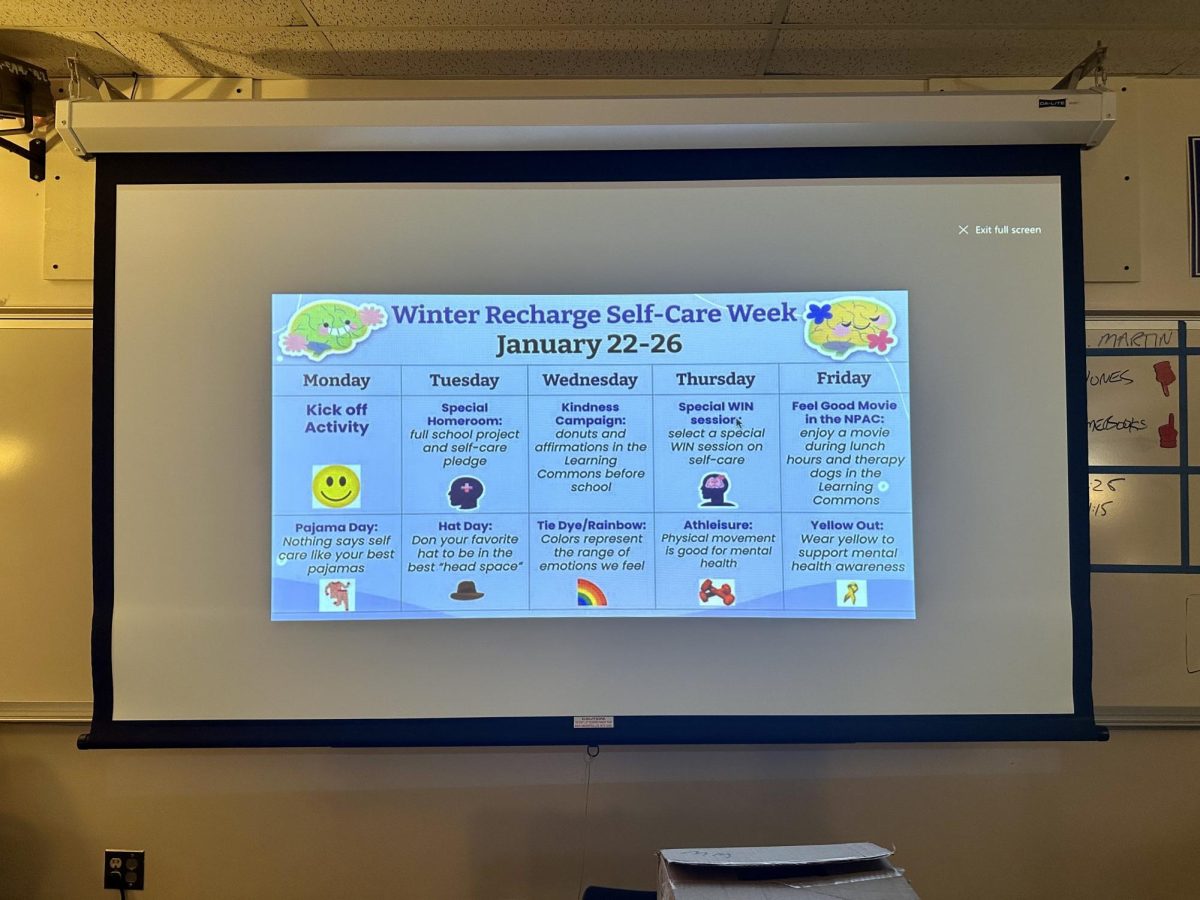District hopes programs implemented at lower grade levels will help close gender gaps in math and science courses
By Editor-in-Chief Allie Pecorin
Senior Velvizhi Rathinavelu sits among 30 other students in a room lit by computer screens.
She has a passion for science and math. So do her other classmates. She is enrolled in AP Computer Science because she is bright and dedicated. So are many of her classmates. She plans to pursue a science-based career in her future. The same can be said for several of the students that surround her.
Yet, for Ratheniavelu and just four others in the class, there is one significant difference.
They are female.
Ratheniavelu, who is also one of six girls in her AP Physics B class, plans to pursue a science-based degree in college, ideally to conduct research in biology. As she advances in this field, she will continue to be one of the few women in the room.
According to an article by the “Chicago Tribune,” today’s job market focuses heavily on science, technology, engineering, and mathematics (STEM) careers. Though most top paying careers fall in these categories, a recent U.S. News and World Report article found that women are considerably unrepresented in these fields.
This gap between males and females starts long before potential job candidates are on the hunt for employment.
NNHS has sizable enrollment gaps between male and female students in its top-level math and science courses. Twenty-one boys take NNHS’ highest-level math course, Multi-Variable Calculus, compared to their 10 female classmates. Though substantial, this 2:1 ratio is trumped by a 5:1 ratio of male to female students in AP Computer Science. AP Physics B has 31 males to six females, and AP Physics C is 25 to eight.
Conversely, girls are overrepresented in AP Literature courses, with 58 enrolled compared to their 38 male counterparts.
These enrollment trends mirror results from the most recent Prairie State Achievement exams. On the PSAE math test, 31.3% of males exceeded standards compared to 25.4% of females; 38.1% of males exceeded science standards compared to 29.8% of females. According to the PSAE, students that exceed standards demonstrate “advanced knowledge and skills in the subject…[and] creatively apply knowledge and skills to solve problems and evaluate the results.”
According to Jayne Willard, Director of Curriculum and Instruction for District 203, the district has begun implementing programs to peak interest in STEM fields among all students.
“We definitely identify the need. We want to be implementing more STEM opportunities in a meaningful way, and we want to bring it down to our earliest learners because that’s where we can capture them,” Willard said. “We hope that that will create a lifelong interest in the field.”
Veronica Arreola, Director of the Women in Science and Engineering Program at the University of Illinois Chicago, believes that early implementation is crucial in involving women in STEM fields.
Willard said District 203’s observations show fourth and fifth grade girls are as engaged in math and science as are boys of the same age; however, according to Arreola, research shows girls begin moving away from math and science fields as early as third grade.
Arreola believes societal pressure causes this split.
“Society is filled with these tiny cues about what way boys are supposed to go and which way girls are supposed to go, and it takes a lot for us to overcome them,” Arreola said.
Willard said District 203 plans to address these pressures by involving more students in applicable STEM courses. The District has implemented Project Lead the Way, an elective-based hands-on STEM option at the junior high levels. New pilot programs being tested at Scott and Highlands Elementary schools challenge students to build with Leggos and think like an engineer.
Arreola believes the implementation of such programs may be effective in taking steps to close the gender gap.
“[It is] really about translating the usefulness of science and engineering to girls,” Arreola said. “I think [the Project Lead the Way] curriculum is really well done. The younger you can implement these sort of things hopefully the better it will come out.”
Fortunately for Rathinavelu, programs like these being implemented at a variety of levels will give her the tools she needs to pursue a STEM career.
Though she said she acknowledges that she will be a minority among males in her field, she is optimistic about pursuing a STEM field.
“I don’t think it’s challenging because I see that there are a lot of programs that also encourage girls in engineering and science,” Rathinavelu said.







Anushka Rau • Mar 11, 2014 at 7:36 pm
Like some of the other commenters, I’ve noticed the discrepancy in gender representation in STEM fields but haven’t personally had it be a huge problem. I think it’s sad that this issue exists, because science is really cool. Like the article mentioned, social cues definitely play a role in the subjects girls pursue versus those of their male counterparts. Although girls are overrepresented in language classes, the gap is still not as wide as in STEM.
Hannah Novak • Mar 9, 2014 at 10:16 pm
A ton of the CTE courses and even Contemporary Health Issues are heavily female-populated. Have you taken a look at classes like early childhood development or intro to teaching?
Those classes could really benefit from having a more equal representation. They’re frequently based on social interaction, and the class is actually pretty stilted by the lack of gender diversity since it’s harder to compare viewpoints on certain things.
Hanna Brubaker • Mar 9, 2014 at 9:38 pm
I have also noticed this trend in my science and math classes. It seems like we’ve been told so many times that girls are better at art and literature and boys are better and math and science, even by teachers! However, I noticed the gap a lot more in elementary school and junior high. I’m not sure if i’ve just become accustomed to the skewed ratio, but I’d like to think that we’ve become more mature and are able to break out of the stereotypes. Programs like the ones being implemented now are really important to keep encouraging all students to take advantage of their passion for math or science.
Kimberly Dauber • Mar 2, 2014 at 11:13 pm
SHE++: THE DOCUMENTARY
http://sheplusplus.stanford.edu/film/
Wow, what a great article! As another one of the five girls in AP Computer Science, I can definitely confirm that I’ve noticed this gap. I’d be very interested in finding out which classes at NNHS are the most single-gender (excluding All-Girls and All-Boys PE, of course).
This “gender gap” isn’t a problem for me on a day-to-day basis. I’ve met a lot of girls who are into math and science,, and almost all of us agree that we just get accustomed to working with boys all the time. However, this could just be because all the girls who felt isolated, weird, and out-of-place have quit. That’s not OK—they’re the ones who are the most different from the people already in STEM, and whose ideas and contributions we miss most. Women and men are not the same, and that’s why we need more women in computer science and similar fields.
So recognize the stereotypes—I won’t tell you to ignore them—and then throw them out of your decisions. If this looks interesting, give it a try. There’s no time like the present.
The link at the top of this comment goes to a documentary by two Stanford female technologists. Check it out for more info on women in computer science.